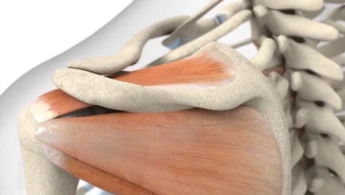10 Essential Tests for Evaluating for Shoulder Impingement
November 13, 2018
4 min. read

Are you a clinician who receives referrals for shoulder pain or shoulder impingement? Have any of the patients you have treated for a distal problem told you that their shoulder hurts and asked you to determine what is wrong with it? When you notice that a patient is avoiding moving their shoulder or using compensatory movements when reaching up, do you know which special tests to perform to identify the structures that are limiting their functional abilities?
No matter the setting you work in, knowing which evidence-based tests to perform throughout the entire shoulder girdle is essential. This knowledge allows you to communicate with referral sources to determine whether radiographic testing is needed, plan for therapeutic intervention, and make referrals to other healthcare professionals if required.
Impingement Terms
In addition to subacromial impingement syndrome (SAIS), other terms you should be familiar with are external impingement, internal impingement, structural impingement, and functional impingement.
External ImpingementThis is a broad category and can include abrasion of the cuff tendons or the long head of the biceps beneath any aspect of the coracoacromial arch.
Internal ImpingementWhile first described in the overhead athlete population, this condition can also be seen in non-overhead athletes or former athletes.
Structural ImpingementThis occurs when there is a reduction of subacromial space, the location of the rotator cuff, the long head of the bicep tendon, and the subacromial bursa with the supraspinatus tendon at the highest risk.
Functional impingementThis is caused by migration of the humeral head due to weakness and/or muscle imbalance.
Impingement of subscapularis tendonThis condition has not been mentioned much in the literature.1
Knowing all of these types of impingement will set you up for success when using the exam tests outlined below.
Essential Tests for Shoulder Impingement PDF
Enter your information to download your free quick reference guide to 10 essential tests for shoulder impingement:
Unlock Resource
How To Test for Shoulder Impingement
After reviewing the reliability and diagnostic accuracy of certain tests for SAIS, researchers determined:
1. The Neer test is useful to rule out SAIS.2. The Jobe (empty can) test is useful to confirm a diagnosis of SAIS.3. The painful arc test is useful to rule out and confirm SAIS.4. The ER resistance test is useful to rule out and confirm SAIS.2
Following the above study, another study looked at the diagnostic accuracy of five tests for diagnosing partial-thickness tears of the supraspinatus tendon, the most involved tendon with impingement. This studys findings agreed with those above and also looked at additional tests and compared the results with MRI, determining:
5. The Yocum test featured 78% sensitivity and 96% specificity.6. The Patte test featured 38% sensitivity and 98% specificity.7. The drop arm test for supraspinatus featured 53% sensitivity and 82% specificityand was the most specific for full-thickness rotator cuff tears.3
There are several tests for that assess the other structures that may be involved in impingement:
8. The external rotation lag sign for involvement infraspinatus featured 98% sensitivity and specificity.49. The posterior internal impingement test features 76% sensitivity and 86% specificity.510. Yergasons test for involvement of the long head of the bicep features 37% sensitivity and 86% specificity.6
Regardless of the setting you work in or your level of clinical experience, an accurate and detailed history is essential. In addition, these tests will guide therapists to an understanding of which structures are involved in a particular case.
These special tests along with evaluation of all the aspects that affect the shoulder girdle (for example, the kinetic chain, the role of the scapula, and the thoracic spine) will allow the therapist to perform a comprehensive evaluation and develop a customized treatment plan based on the patient's occupational demands. Joining a journal club and collaborating with other rehabilitation professionals can help you stay on top of the latest developments and current research in various populations such as overhead athletes, weekend warriors, manual laborers, and geriatric patients.
Below, watch Jennifer Dodson demonstrate three shoulder impingement assessment tests in a short clip from her MedBridge course, Evaluation of Shoulder Impingement.






